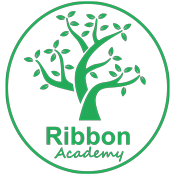We believe that high-quality Art lessons will inspire children to think independently, innovatively and develop creative, procedural and technical understanding, whilst truly recognising that everyone is an artist.
Our Art curriculum provides children with opportunities to
- develop their ideas and skills using a range of media and materials;
- learn the skills of drawing, painting, collage, sculpture, print, textile and digital media;
- explore and evaluate different creative ideas using the language of art, craft and design;
- know about great artists, craft makers and designers, and understand the historical and cultural development of their art forms;
- evaluate and analyse creative works
It is paramount that art work be purposeful; be this as a means of expression or to explore the styles of other artists that inspire our own work. Pupils should be clear what the intended outcomes are and have a means to measure their own work against this. In Art, children are expected to be reflective and evaluate their work, thinking about how they can make changes and keep improving and developing their ideas. This should be meaningful and continuous throughout the process, with evidence of age-related verbal and written refection. Children are encouraged to take risks and experiment and then reflect on why some ideas and techniques are successful or not for a particular project.
Our Art & Design Overview outlines the essential details to ensure full coverage of the National Curriculum whilst providing our teachers with the tools required to support the development of inspired and creative artists. These details include: –
- progression of teaching topics and stimulus for learning
- identification of artistic skills to teach, learn and practise
- prioritised knowledge to know, supporting an improved conceptual understanding of the development of art whilst supporting application concepts into their own work.
This information informs the Year Group ‘S’ plans that are utilized to plan and deliver high-quality, sequential lessons that are progressive and integrate the essential knowledge and skills to research, practise, design, and create whilst integrating evaluation throughout. Even though we value the tool of modelling examples with the children, we also value the creative choices of our children encouraging justification of choices through experience, expectation and creativity. This means final products may look similar at times but a uniqueness is encouraged.
We are fortunate to have our very own ‘Design Studio’ which is utilized to inspire and stimulate creativity throughout Art and Design lessons whilst ensuring accessibility of materials and tools to ensure at no point that our children’s creativity is stunted through limited choice or resource availability.

